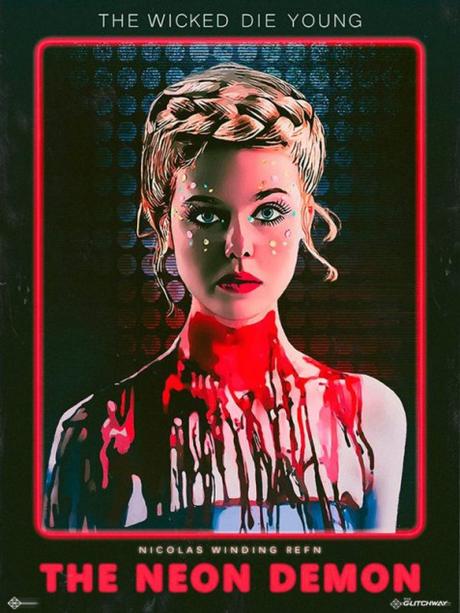
The Neon Demon (2016)
Starring: Elle Fanning, Jena Malone, Karl Glusman
Directed By: Nicholas Winding Refn
Written By: Nicholas Winding Refn
Release Date: June 24, 2016
Rating: C+
Summary: When a young girl moves to LA to become a model, she gets sucked into the world of glamour and fame. However, when things turn sinister, she finds herself trapped and struggling to make it out alive.
My Thoughts: Stylistic, beautiful and haunting are a few things that come to mind when I think of The Neon Demon, and it is all those things till the very end when the credits roll. But even so, what it lacks in cohesive structure, it makes up with its stunning, almost hypnotic visuals, such as the scene that circles around our lead as she spies in on her neighbors before cutting to the next, similar to that of Robert Wiene's The Cabinet of Dr. Caligari that uses the same technique to do just that, even though they are in two different realms of film making. However its in these visuals that the film unfolds, but do all the things that make The Neon Demon what it is destroy the reality it's trying to critique?
Starring Elle Fanning as, Jesse, a young model who moves to LA to make it big,
The Neon Demon immediately catches your eye with it's glamorous flashing lights and vibrant cinematography. And these colors are so elegant and illuminating, they're quite hard to look away from, much like our main character Jesse, who, like us, gets swept away by all the bright lights and glitz and glam that is the fashion industry. However, instead of this film feeling like an actual film, it feels more like a dream because on top of these visuals that feel like they've been torn from an issue of Vogue, we're given these ill-paced events that would only seem to happen within a dream, like mountain lions suddenly appearing in a hotel room or beautiful naked women lying in pools of blood. It's in these situations that the dream we thought we were in suddenly turns into a nightmare.Much like the Salvador Dali's 1929 short film, Un Chien Andalou, there's no real timeline in this film and this is what adds to the dreaminess of the film. Days and days go by, or maybe even months, but each film seems as if it's happening in one night, even though we know they aren't. And this is because the films give you hints on the timeline such as having title cards read things like "eight years later" or setting certain shots outside, physically differentiating night from day. But it does leave us with quite a lot of questions like, does Jesse really become a star overnight simply because the industry's unique fixation on youth, purity and innocence speeds up this teenager's rise to fame or does it happen over the course of a couple of months and Winding has simply decided cut that out? Or subsequently, if the young man in the film is shot sixteen years prior to him bursting in on the man who shot him and a woman, how can the scene of him bursting in come to be in the first place. And it's this disruption of time that further emulates that maybe the reality we believe Jesse to be in does not, in fact, exist. That maybe the fashion industry is not how we believe it to be in the film, which is vain and evil in this case, but, instead, the complete opposite. And it's this lack of a continuous time frame that makes it seem as if everything we've seen in Un Chien Andalou is just this dream sequence, cutting and jumping around from event to event and shot to shot just because, even though there should be a reason for each cut. But each film is purposely this kind of paradox, open to multiple interpretations, but where Dali's short and Winding's feature differ is that while both films are a bit all over the place, Winding's film has a bit more of structural narrative following Jesse's life with a majority of the film following her with wide shots closing in to closer, mid shots with not much cutting unless it's to another scene, or invisible editing or sorts. Another addition to this film seeming dreamlike in nature. However, it feels as Dali's film, however, simply exists for it's viewers to try piece together what goes where, with no continuity whatsoever with more so of an emphasis on staying within this realm of surrealism than anything else. And so, after Jesse is eaten alive by her fellow models, what occurs next? They vomit her up, specifically just her eyeball. It is only in her death that she truly sees the industry for what it is. The reality of her world has now come to light as someone is going to find the model's murdered body on the ground, unlike hers. Even though the other woman ate her eyeball back up, someone is going to find out that something isn't quite right and this is different from the eyeball scene in Un Chien Andalou, as the man slices her eyeball because unlike Jesse's uncovered reality, ours is destroyed. We're literally being cut off from any sort of coherent vision and knowledge into the world of the film simply because it's all supposed to be this sort of dream, but we're human, we're still curious and hungry to absolute knowledge so we still question whether or not what we're seeing real because it's not explicitly stated. But that's the point: the filmmakers don't want us to know.
